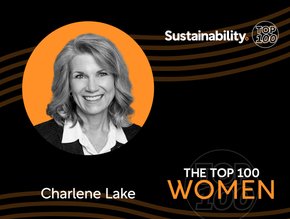Businesses and taking the temperature of enterprise risk

The analytics most insurers use to assess vulnerability to perils, such as exposure to flooding, hurricanes, and wildfires – and the consequences of climate change – could provide a more comprehensive view of potential disruptions to operations, and as a result, inform decisions that could make businesses more resilient.
But resilience and sustainability are not to be confused. While there has been a laudable focus by the business community on setting longer term sustainability goals, this has come at the expense of making more difficult decisions on improving resilience, a consequence highlighted in this recent report by the World Economic Forum. As such, many businesses fail to account for the climate risks that can leave them vulnerable in the short term to interrupted operations, transition risks, environmental regulation and climate-related disclosure.
Climate risk is increasing exponentially…
Climate risk extends far beyond the physical impacts of climate change. There are second-order threats, such as civil unrest, mass migration, resource insecurity and political instability, which could be triggered or aggravated by our climate changing planet. Factors such as economic security, strength of institutions, poverty, human rights conditions, conflict and strength of infrastructure, are all crucial to a country’s resilience. If a country performs poorly on these issues, there is a much greater potential for destabilisation.
Although the resilience of richer ‘insulated’ countries can be dragged down by the vulnerability of their global supply chains, areas of the UK are also under threat from rising sea levels, extreme weather and increased temperatures.
…and both imported and homegrown goods are under threat
The 2022 UK heatwave highlighted the vulnerability of supply chains to climate-associated risk. In farming, 50% of potato crop was ruined by heatwave conditions last Summer, while Wheat Yields in 2020 were 17% below average. The future will only bring further problems for homegrown suppliers, as low-lying agricultural regions including East Anglia could lose arable land to coastal erosion and saltwater incursion.
As homegrown goods come under pressure, the UK will rely more heavily on imports, but these are also liable to climate-risk related disruption. For example, Bangladesh supplies the UK with both food goods such as frozen shrimp and animal and vegetable fats, and clothing and textile products. These imports amount to £3.05 billion worth of goods, making them critical to both British supply chains, the Bangladeshi economy and global supply chains.
However, Bangladesh has the 7th most sensitive economy to climate shocks – meaning it’s supply chain is built on environmentally and socio-politically vulnerable ground. There could be major consequences as the effects of climate change in Bangladesh intensify, and this is a case repeated across the global industrial landscape.
The bigger picture
A closer look at the global landscape puts this into sharp perspective. The latest Verisk Maplecroft Environmental Risk Outlook found that roughly a third of countries lack the structural strengths needed to minimise the chances of secondary climate risks emerging, while many more are in a ‘precarious’ position. In large part, these are the countries that are responsible for the bulk of the world’s manufactured goods and the production of many of the raw materials that go into them. If instability strikes hard, disruption to trade flows, markets and companies is all but assured.
Businesses need to take a step-by-step assessment
A ‘full spectrum’ approach to risk, looking at how these issues interweave and feed each other from a global perspective, will be critical to mitigate climate-related risks in the next decade.
To advance an understanding of risk and build long-term resilience, the first step is to pinpoint geospatial risks. This includes obtaining the data that can accurately assess exposure of key business locations, assets in companies’ portfolios, global suppliers and raw materials open to climate-based risks.
Next, businesses should review the scenarios that would stress exposures, such as a devastating typhoon or extended power outages, and prioritise the threats within their risk profiles. Stress testing decision-making and risk management processes against high-impact scenarios specific to areas of exposure can help enterprises get ahead of risks well before they snowball into direct ESG or political threats to operations, assets and investments.
Identifying where these impacts will become most prevalent – and which countries are most at risk – is vital in managing cascading threats for organisations aiming to reinforce their long-term resilience and for governments looking at external factors threatening their own interests.
Be prepared and plan for disruption now and into the future
Companies able to plan for climate-related instability are far more likely to be better equipped to protect investments, bring in mitigation measures or even switch suppliers, helping to avoid more costly disruption or reputational issues. Just as insurance industry practices have evolved to support resilience, the business world must adopt a nuanced view of environmental risk to avoid or mitigate more operational disasters.
As direct and indirect climate risks grow across the globe, organisations with informed strategies in place will be better prepared to weather the storm.






